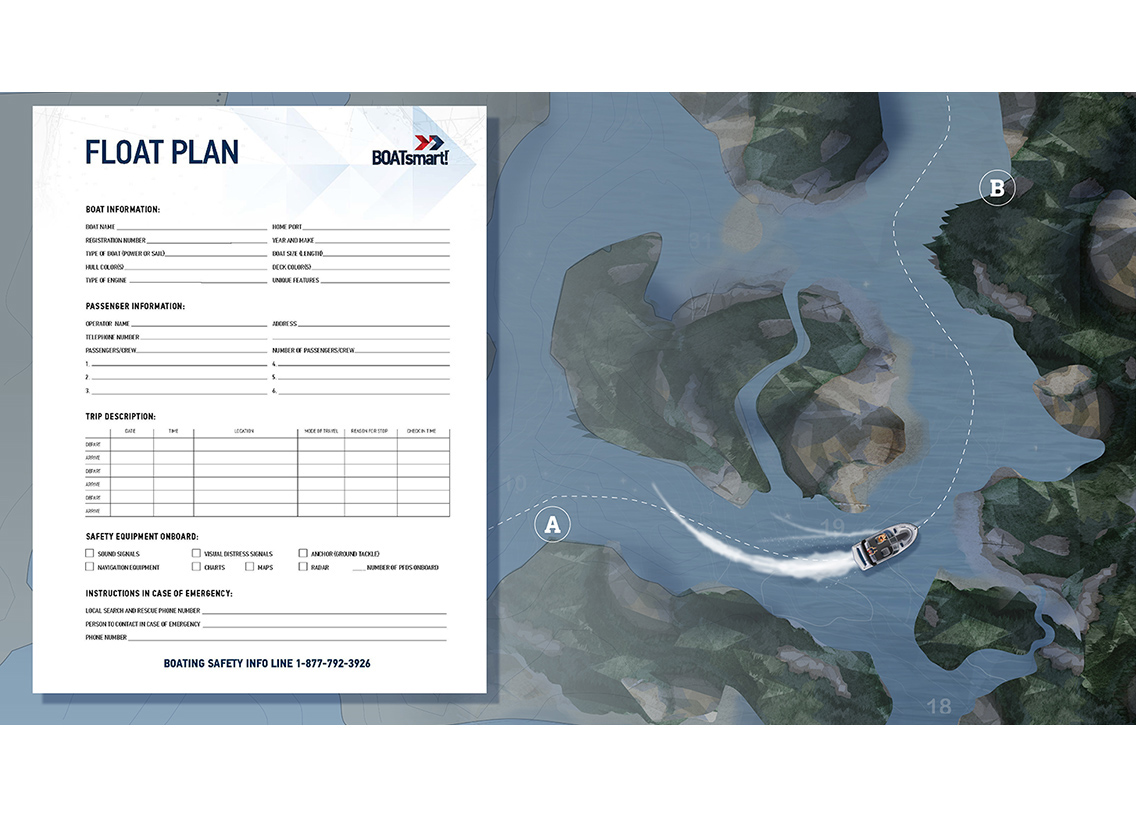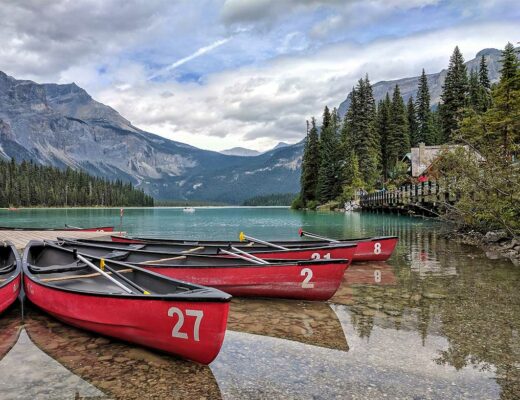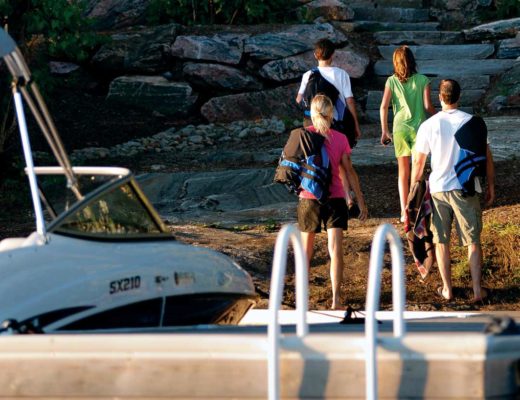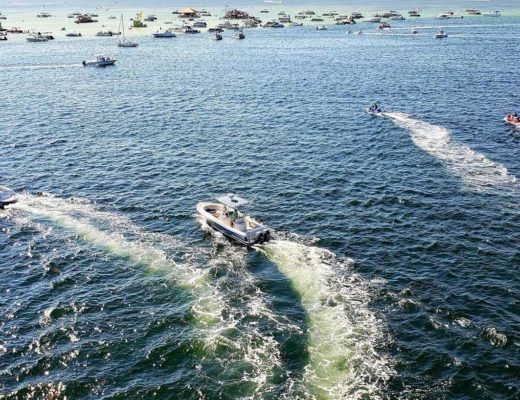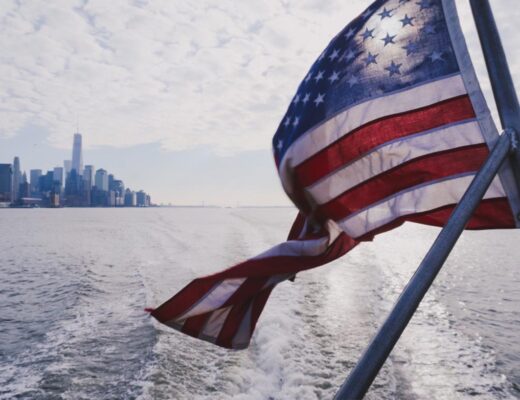Boating weather and water conditions are unpredictable and can change in a heartbeat, so having an outline of your planned trip can help in times of emergency. A trip plan – also known as a Float Plan – is a document that provides information about you, your trip and how to find you if necessary. It’s just like leaving a trail of breadcrumbs so that if someone is searching for you, they know where to look.
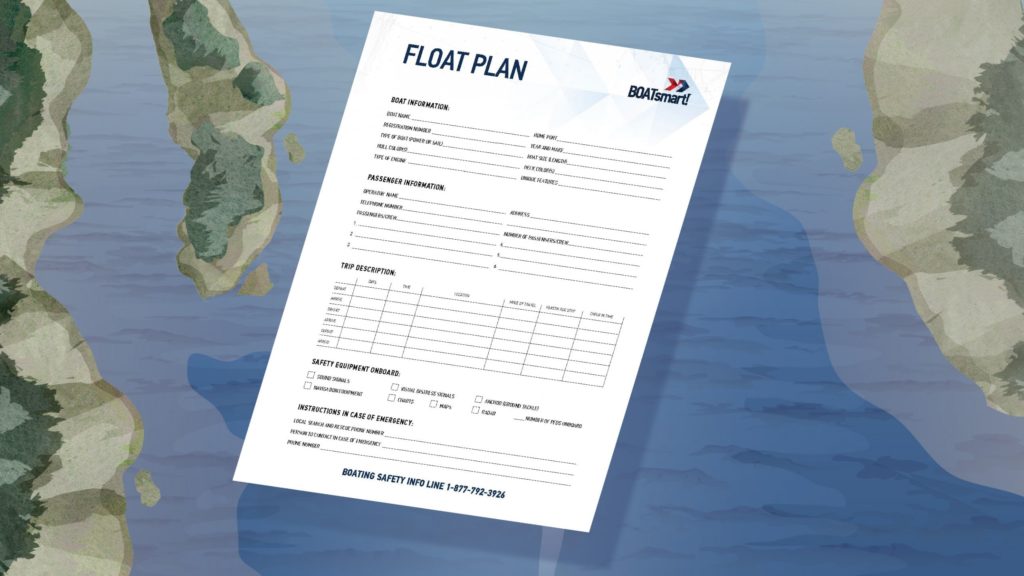
Where to Leave Your Float Plan
Before leaving, give your float plan to someone on shore or an employee at your local marina. Your plan should contain information including your destination and expected return time so that if you do not return on time ,rescue teams can easily find their way to you. In emergency situations, the person with access to your float plan will have to react quickly and effectively, so make sure it is somebody that you trust or who understands the importance of staying safe on the water and the associated risks you could face, such as marina employees
Float Plan Information
If you do not have the time or did not consider writing out a full float plan, the minimum you can do is message a friend or leave a Facebook status telling your friends your whereabouts.
- What are you doing?
- Where are you going?
- When will you return?
- Who are you going with?
There are four main categories of information that should be logged in your float plan, and they are: your boat’s information, your boat’s safety equipment, passenger information, and trip information.
Your Boat’s Information
Do your best to describe your boat in your float plan because in emergency situations, rescue teams will need to know what they are looking for. Information such as your boat’s name, its registration number, along with the size and colour are great visuals for rescue teams to follow. You should also describe the type of boat (such as sail, paddle, power), year and make and type of engine. Lastly, if your boat has any unique features, be sure to include those as well. Looking for a boat can be hard, but if the rescue teams know to look for a boat with a big Canadian flag on it, their jobs become much easier.
Your Boat’s Safety Equipment
It is always important for rescue teams to know what safety equipment you will have access to while they are searching. Be sure to list all of your equipment, such as sound and visual signals, navigation equipment, anchor, and number of lifejackets. If the rescue team notes that you are missing any equipment, they can alter their search accordingly. For example, if they note that you do not have an anchor on board, they will widen their search because the know that your boat has not been stable in the same place.
To see a list of all required safety equipment, click here.
Passenger Information
Include your name and contact information as well as the number of passengers and their names. , If rescue teams are out looking for you and your crew, they will be calling for you, so it is important for them to know who they are searching for. It is also a good idea to note any medical information such as illnesses or allergies in your group.
Trip Information
Outline exactly what you will be doing on your trip, from your proposed departure and return times to your proposed route of travel. Also, include instructions in case of emergency so that whoever has your float plan knows exactly what to tell the rescue crews. These instructions can be overviews of the medical condition of all passengers, or any medication that they might need or be allergic to.
After you’ve put together all your information and handed it off to someone you trust, you are good to go. You can boat easy knowing that in any case of emergency your trusted person will have your plan and know how to react. Making float plans is part of being prepared! Get your boat license with BOATsmart! to get on the water today!
